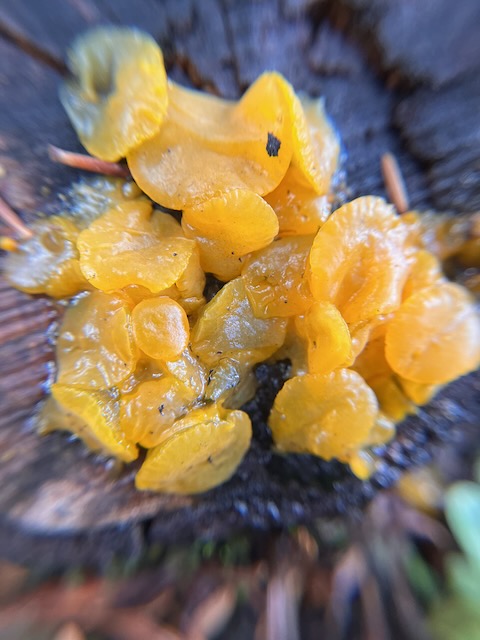Weeknotes are a habit I'm cultivating where I share what I'm working on or thinking about, primarily in my professional life, without worrying too much about the ideas being full-formed.
quotes
We’ve all seen beautiful pictures from Midjourney, presently the undisputed leader among several image-generating programs. It appears the LLMs are a lot more adept at generating visual art than text. But are they really? Artists and software engineers will both tell you they’re far from perfect. Even those images that do not have obvious issues, such as too many fingers on a character’s hand or a building melting into the ground, may still suffer from poor perspective, characters staring into nothing, and other such imperfections. As explained by AR/VR engineer and award-winning author Kimberly Unger, “More people have a grounding in the structure of language, even though they may have forgot the specifics, then have a grounding in the structure of visuals. So to your average observer, it’s easier for them to understand, often unconsciously, where the text goes wrong, than it is for them to understand where the pictures go wrong.” (View Highlight)
Alex Shvartsman | 2200 words on The Brave New Generative World
thinking about / working on:
It’s the last week before the term begins and I’m heading into the mountains with my partner for a few days this week to recharge before all the wonderful craziness of September starts. Hopefully this will also be a nice way to end what has been an unexpectedly busy and stressful summer, during which my mom passes away after a short illness with cancer.
We’re leaving Tuesday afternoon, so this week is mostly about making sure the Makerspace team is set for the week, my new Student Ambassadors have their schedules, and I’m ready for their training day in two weeks. But I’ve also existed in post-secondary long enough that my real year is September to April, so it’s a good time to think about priorities for the year.
Makerspace:
- Spend more time with users
- Encourage user projects that go deeper and wider
- Focus on our finding ways to make our values concrete
Department Chair:
- Survive as solo chair until January when my co-chair returns
Professional Development
- Finally finish my sections of the paper we are writing about a makerspace assessment project from almost 2 years ago (yikes!)
- Find potential site-visits for my sabbatical next July, focusing on people and institutions using making (broadly defined) to rehabilitate our relationship with the more-than-human world
How I’m going to do these?
- Makerspace Sandbox Sessions: weekly co-working sessions where people can come work on projects in a supportive, collaborative environment.
- Training our student ambassadors to help users to be more sustainable and to try new things
- Scheduling dedicated time for chair work and trying to most box that work into those times
- Scheduling dedicated time for professional development
photos

links
Jason Edward Lewis on Making Kin with the Machines [[_reference/Readwise/Making Kin with the Machines – Jason Edward Lewis – articles – annotations.md#^9iia1w|*]]
My grandfather, Standing Cloud (Bill Stover), communicates Lakota ethics and ontology through speaking about the interiority of stones: “These ancestors that I have in my hand are going to speak through me so that you will understand the things that they see happening in this world and the things that they know [. . .] to help all people.”24 Stones are considered ancestors, stones actively speak, stones speak through and to humans, stones see and know. Most importantly, stones want to help. The agency of stones connects directly to the question of AI, as AI is formed from not only code, but from materials of the earth. To remove the concept of AI from its materiality is to sever this connection. Forming a relationship to AI, we form a relationship to the mines and the stones. Relations with AI are therefore relations with exploited resources. If we are able to approach this relationship ethically, we must reconsider the ontological status of each of the parts which contribute to AI, all the way back to the mines from which our technology’s material resources emerge.
and
Hāloa, the long breath providing sustenance to us all teaches us to maintain pono relationships; wahkohtawin, being in relationship with others; wakȟáŋ, that which cannot be understood. These are three concepts that suggest possible ways forward as we consider drawing AI into our circle of relationships. They illuminate the full scale of relationships that sustain us, provide guidance on recognizing non-human beings and building relationships with them founded on respect and reciprocity, and suggest how we can to attend to those relationships in the face of ineffable complexity.
Donna Lanclos on Where Is Your Place? Keynote for Social Science Librarians Boot Camp–RVA
In going about my work, it became apparent that as “library faculty” I had none of the protections of the state staff contract, and none of the flexibility of the tenured or tenure-track faculty contract. None of my colleagues with faculty status in the library did.
Donna Lanclos
Faculty status, however precarious, was our means to getting on campus committees. It was how we qualified to apply for on-campus grants to do research and pedagogical projects.